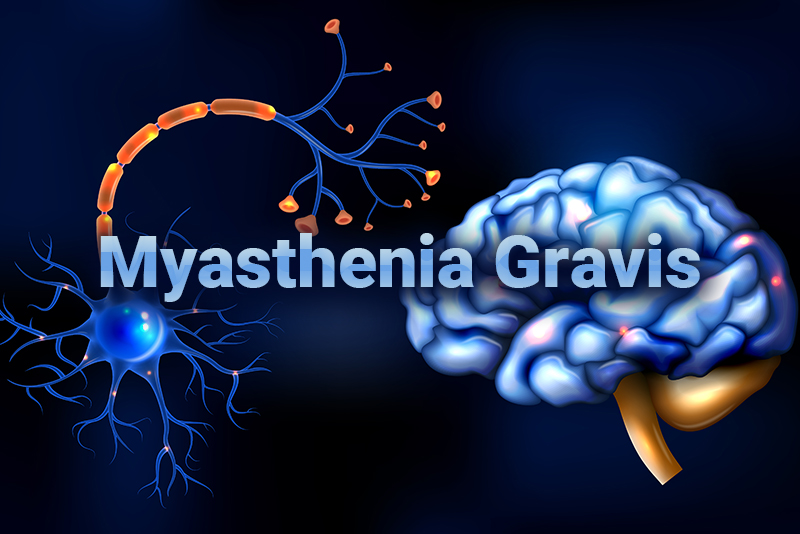A common neuromuscular disorder, Myasthenia gravis (MG) causes weakness in the skeletal muscles – the muscles the body uses for movement. The condition occurs when the normal communication between nerves and muscles gets impaired, causing crucial muscle weaknesses and contractions.
As per reports from the Myasthenia Gravis Foundation of America, MG is the most common primary disorder of neuromuscular transmission. Even though this disease could affect people of any age group, it is more common in women below the age of 40 and men above the age of 60. If left untreated, the condition can cause severe, life-threatening complications like myasthenic crisis, thymus gland tumors and other disorders like underactive or overactive thyroid and autoimmune conditions (like rheumatoid arthritis or lupus).
Taking adequate amount of rest can help minimize the symptoms of muscle weakness. Billing and coding for neuromuscular disorders can be challenging due to the complexity of the codes and related medical terminologies. Medical billing and coding companies can accurately assign the medical codes and ensure timely submission of your medical claims.
It is estimated that Myasthenia gravis (MG) affects about 20 out of every 100,000 people in the United States. The exact factors that cause this condition are unknown. According to the Muscular Dystrophy Association (MDA), the condition may be triggered by a combination of irregular antibodies or problems with the thymus gland. Several factors like – age, family history of auto-immune disorders, infections, fatigue, use of certain medications and stress can increase the risk of this condition in the long run.
Symptoms, Diagnosis and Treatment for MG
Sudden weakness in the voluntary skeletal muscles is one of the main symptoms of MG. In fact, muscle weakness usually gets worse with more activity and improves with rest. Other related symptoms include –
- Drooping of one or both eyelids (ptosis)
- Double vision (diplopia)
- Weakness in the neck, arms and legs
- Trouble speaking
- Respiratory failure
- Problems walking up stairs or lifting objects
- Hoarse voice
- Facial paralysis
- Difficulty in swallowing or chewing
- Breathing problems
However, not everyone will experience all these symptoms listed above as the degree of muscle weakness can change from day to day. If left untreated, the severity of these symptoms increases over time.
Diagnosis of MG will begin with a medical history evaluation and physical examination. Physicians will conduct a detailed neurological examination to test the muscle reflexes, strength and balance. A blood analysis may be performed to identify the presence of abnormal antibodies that trigger the nerve impulses. Imaging tests like – CT scan or an MRI will be performed to check if there is a tumor or other abnormality in the thymus. Other additional tests include – ice pack test, repetitive nerve stimulation, single-fiber electromyography (EMG) and pulmonary function tests.
There is no single or specific treatment for myasthenia gravis (MG). However, a combination of treatment modalities can help relieve symptoms and control the activity of the immune system. The administration of a specific treatment will depend on several factors like – age of the patient, severity of symptoms and how fast these symptoms are progressing. Common treatment modalities include – medications (Corticosteroids and immunosuppressants), intravenous therapy and surgery (to remove a tumor in the thymus gland).
ICD-10 Codes for Myasthenia Gravis
- G70 Myasthenia gravis and other myoneural disorders
- G70.0 Myasthenia gravis
- G70.00 Myasthenia gravis, without (acute) exacerbation
- G70.01 Myasthenia gravis, with (acute) exacerbation
- G70.1 Toxic myoneural disorders
- G70.2 Congenital and developmental myasthenia
- G70.8 Other specified myoneural disorders
- G70.80 Lambert-Eaton syndrome, unspecified
- G70.81 Lambert-Eaton syndrome in disease classified elsewhere
- G70.89 Other specified myoneural disorders
- G70.9 Myoneural disorder, unspecified
The above treatment modalities cannot fully cure MG. However, significant improvements in the symptoms may be seen. Incorporating certain lifestyle changes – like taking adequate amount of rest (that help minimize weakness), avoiding stress, wearing an eye patch to prevent over exposure to heat and adjusting or changing routine eating habits (to improve muscle strength) can help prevent the occurrence of symptoms in the long run.
Healthcare providers need to be well-informed about the specific ICD-10 codes to report myasthenia gravis (MG). Medical billing and coding services provided by AAPC-certified coders can help physicians optimize reimbursement for the services they offer.




